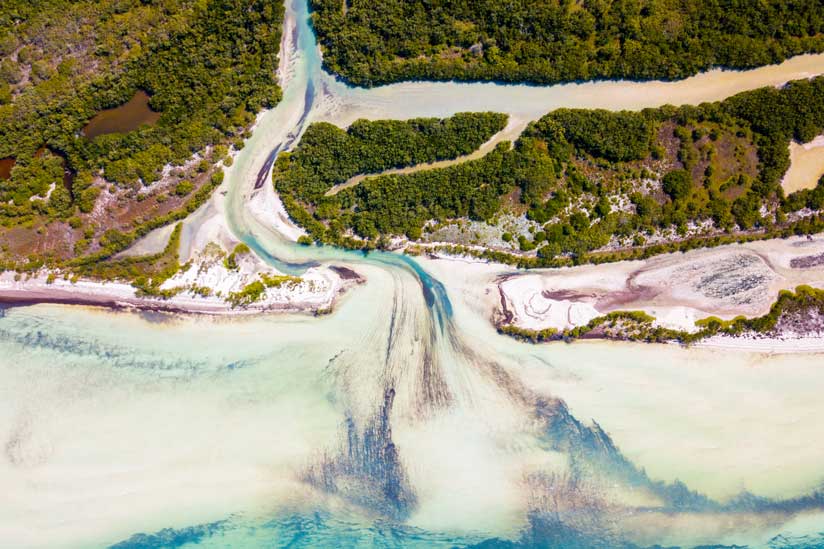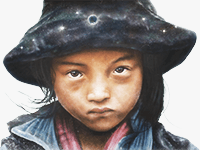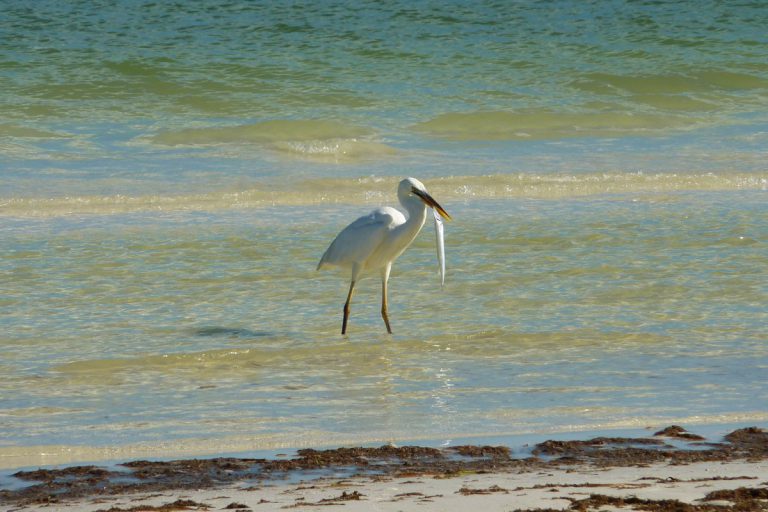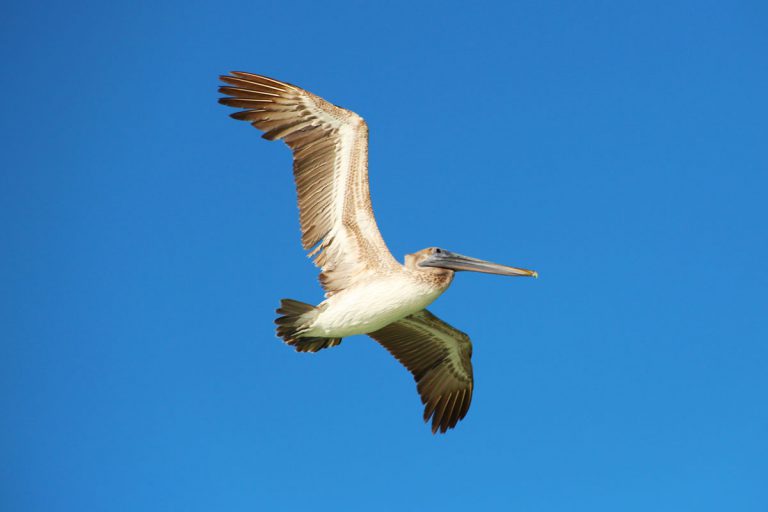The Nature Paradise
Vegetation and wildlife on Isla Holbox
Sand and Beach
Isla Holbox consists mainly of fine shell sand. Due to the changing climatic conditions and the tides, the exact coastline of the island has always changed slightly and is still in a constant state of flux. To counteract erosion of the beach, bags of concrete were formed into barricades in some areas many years ago, extending from the beaches towards the open sea to ensure that the sand is not washed away. This doesn’t look very nice, but it serves its purpose.
The northern boundary of the island is a single beach more than 30 kilometers long facing the open Caribbean Sea, curving westward near the village of Holbox, which is why you can see what are probably the most beautiful sunsets in the area. The sandy beach near the center is called Playa Grande and the sea shimmers in shades of emerald green to turquoise along its entire length.
The water is very shallow everywhere and you have to go several meters into the sea to be able to swim. On the beach itself, of course, there are always places with washed up algae and seaweed, especially after a thunderstorm or stronger storm. The large hotels and beach clubs remove this regularly, so that nothing stands in the way of swimming fun. The Riviera Maya from Cancún to Tulum, where large amounts of Sargassum (brown algae) are washed up again and again, is fortunately not found on Holbox, since the island is largely protected from it due to its favorable location.
In the east, a few hundred meters after the last hotel Las Nubes, the beach is interrupted by a lagoon that is impassable on foot. However, there is a walkable sandbar parallel to the beach, so you can continue to walk along this path towards Punta Mosquito.

If you go in the other direction, to the west, you will finally come to Punta Cocos, a small bay that is often used by the locals for fishing with the net. At low tide, you can continue a bit further across the bay, but at the latest 300 meters after that, the path finally ends at Punta Ciricote. From there on, the tropical jungle has grown up to the coast and you can only see over to the tangible small island Isla de la Pasión.
Jungle and Mangroves
The south and the inner part of the island are mainly covered with thorny bushes and rather small trees. In between, the jungle is repeatedly interrupted by smaller dunes, larger puddles and lagoons. Here you will also find mangroves that have adapted to the changing water levels during the rainy and dry seasons as well as to high and low tides.
If you plan to explore this jungle more closely, a good mosquito repellent is recommended, because as soon as you dare to take the first step into the undergrowth, you will be attacked by mosquitoes. On the northern beach, on the other hand, there are numerous coconut trees in and around the hotel complexes, although they were planted here and are not of natural origin.
Paradise for Flamingos, Pelicans and Herons
Holbox is a nature paradise not only for the feathered animals themselves, but also for their human observers. As many as 350 different species of birds have been sighted on the island. The most famous among them can be seen every day on the beach.
Pelicans, looking for fish in the sea at good spots, gliding low over the water or swooping down on their prey from above. Seagulls squawking loudly as they fight with their own kind or other birds over captured fish. White egrets, unimpressed by humans, roaming the beach or looking down from the palapa roofs.
Frigatebirds and cormorants standing almost still in the wind high above the beach or making their wide circles to feast on fish in the sea at dusk. The unfortunately very shy flamingos, on the other hand, are often seen in the shallow waters of the sandbanks, poking around for shells and other sea creatures.
In any case, a trip to Isla Pájeros is worthwhile, because numerous bird species nest on this small protected island, which can be observed from a small observation tower at close range. If you are particularly interested in bird watching, we recommend joining a guided tour. You can find more information on our tours page.
Prehistoric Animals
A long walk on the beach can be surprising when suddenly skeletons of prehistoric crabs are lying around or living specimens as big as soup bowls roam the shallow water. These horseshoe crabs are now an endangered species and come near the beach in early summer during mating season. The animals are harmless and it is better to leave them alone during their reproductive activities. When walking in shallow water, one should always keep a watchful eye so as not to accidentally step on the crabs, which like to half-bury themselves in the sand. A kick on the stinger can be very painful!
In the lagoon or in more secluded places you may spot a small crocodile and the lethargic black iguanas are common everywhere on the island anyway.
Whale Sharks, Dolphins and Rays
Isla Holbox is especially known for having numerous whale sharks scouring the waters around the island for plankton from late May through September. To observe these huge, harmless fish or even to swim with them, strictly limited whale shark tours are offered during the season.
To make sure that they always come back to their natural habitat, the number of excursion boats and people has been limited and everyone who undertakes such a tour has to wear an official wristband. This is a good thing, because the whale sharks were classified as a highly endangered species a few years ago and are on the red list.
If one is in the course of a tour once a little further out to sea, one often sees dolphins or even huge manta rays, which also sift plankton from the water. It is this plankton that leads to the so-called bioluminescence at night. Of course, there are also tours to book for this.



















